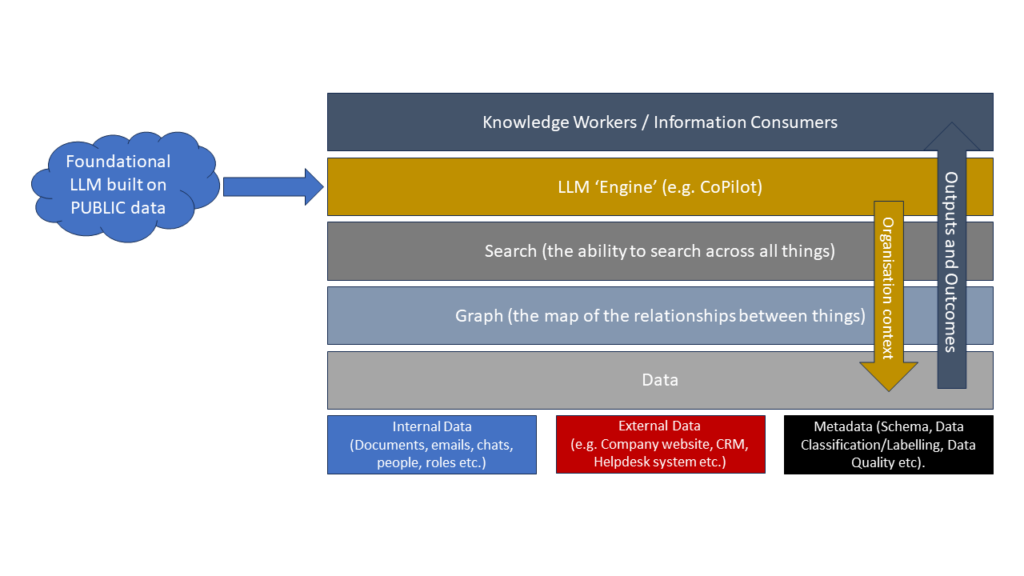
Fear and Loathing in the Data

We were somewhere around Barstow on the edge of the Business Intelligence project scoping when the shiny new technology hype began to take hold. I remember saying something like ‘I feel a bit lightheaded; maybe you should drive . . .’ And suddenly there was a terrible roar all around us and the sky was full of what looked like huge bats, all swooping and screeching and diving around the project team, who were going about a hundred miles an hour with the top down to Las Vegas. And a voice was screaming, ‘Holy Jesus! What do these technologies actually DO?’
This paraphrasing of the opening to Hunter S Thompson’s Fear and Loathing in Las Vegas just might hold the key to the dilemma posed by Dr Tom Redman in his most recent article for Dataversity. Read on to find out why I think this to be the case!
In his article for Dataversity, Tom sets out five key steps he believes need to be taken before we can displace the fear that has supplanted apathy as the driver for data management with something more wholesome and effective.
In my many conversations with Tom on this topic over the years (the most recent within the last few days), I put forward the suggestion that our biggest problem is the “shiny bauble panacea problem” that comes from the technology roots and branches of our information and data management disciplines. It is this challenge that we need to overcome as it is the instant pudding rebuttal to many of the solutions Tom proposes to addressing our data driven-into-the-ditch challenges of today.
- He tells us that “Step one is to take a hard look in the mirror and recognize that we’ve failed our companies”.
Have we? Or maybe we just haven’t got the right technology. Maybe the new Bonobo Monkey Data Cluster(tm) software will provide the platform we need (fetch me more bonobo!). After all, the analyst reports are all saying that Bonobo is a shooting star vendor to get on board with. Obviously they misjudged SimianSystems, the technology we have today.
Introspection is hard in the face of aggressive marketing of quick fix solutions supported by analyst research. The late night TV Shopping channel health and fitness gadget industry is fuelled by this just as much as the Data Management industry. But the fundamentals of losing weight and getting fit are the same regardless of the technology. And every home has a closet stuffed with examples of the “Last great thing in home fitness” when we just needed to look in the mirror and realise that lifting 10 kgs with each hand every day doesn’t count when it consists entirely of pizza slices en route to our mouths.
- Dr Redman admonishes us to “engage the business” and to develop an understanding of what they actually do.
This is good advice. However, it has a weakpoint when it comes to people who come from a technology perspective who are trying to engage with people who want magical things to happen with their data because the late night TV shopping channel equivalent industry news bulletin or conference brochure blurb factory is telling non-technology people that they need Bonobo Monkey Data Cluster to make sense of their data.
When one person who sees the world through the Monkey Data Cluster lens meets a customer/partner who is supping Monkey Cluster gatorade, we wind up buying the 2-for-1 deal on Bonobo Monkey Cluster technologies. If we end up engaging by focussing on the wrong element of the problem, and the wrong feature of the solutions, we won’t move forward.
Tom’s points three, four, and five are actually the key to the sustainable solution – invest in the basics, build the organisation, and seize the initative. However they are not attainable if we persist with a technology fetish when it comes to data.
- Investing in the basics carries little weight when the other guy is climbing the pole on the back of a not-entirely-failed Bonobo Monkey Cluster (or other ‘tech de jour’) initiative. The basics aren’t sexy. They don’t go “Ding”. They plod along being largely unimpressive in and of themselves. In the same way as Eric Clapton’s investment in the basics of scales and blues licks is entirely unimpressive, in and of itself. Until we look at the OUTCOME of that effort.
- It’s hard to build the organisation when everyone wants to work for the guy with the machine that goes “Ding”. It doesn’t matter if that is all that it does. If the industry analysts are saying that “machines that go ding are the in thing”, then everyone wants to be at least near one. Again… the basics and fundamentals of quality are not sexy. But not having them in place can lead to premature “Ding” in the Bonobo Monkey Cluster.
- Seizing the initative is also difficult when people expect you to have some form of instant pudding recipe for success, and particularly when they expect you to end your elevator pitch with “and then we’ll fire up the Bonobo Monkey Cluster Engine and everything will be fixed by Friday”. Again… everyone loves a leader with a machine that goes “Ding” because we have become conditioned to expect a technology fix.
The “Shiny Bauble” problem
Therein lies our dilemma. Data has become synonymous with technology. Therefore, as each generation of Lovers of Data (or Leaders In Data) cracks the nut and makes two steps forward in understanding, we find ourselves with willing audiences ready to take the leap.
Then, from, the back of the room, something goes “Ding” and everyone turns to see the shiny bauble. This behaviour is fundamental and deeply ingrained. We see it in animals as diverse as cats, magpies, small children, and Chief Executive Officers.
Deming put it best:
The emphasis should be on why we do the job
Until we separate the “why” of doing the job from the “how” in the mindset of our organisations, our peers, and the wider community we will continue to have skys full of huge bats descending on us and a voice screaming out “What do these technologies actually DO?!”
The challenge we have is how do we overcome the shiny bauble problem so that we can move our organisations and our profession forward in a way that allows us to put Dr Redman’s wonderful advice into practice and actually get organisations to a point where we can, without fear, ask:
“What do you get if you lock 100 bonobos in a room with 100 typewriters for 100 days?”
The answer that the Bonobo Monkey Cluster Engine salesman (“DING”) is selling is that we’ll get the works of Shakespeare. In reality, we’ll get a room full of dead bonobos because we miss the fundamental step of ensuring that someone feeds the monkeys.
Fundamentals matter. We need to remember why we do the job of gathering, processing, and managing information.


